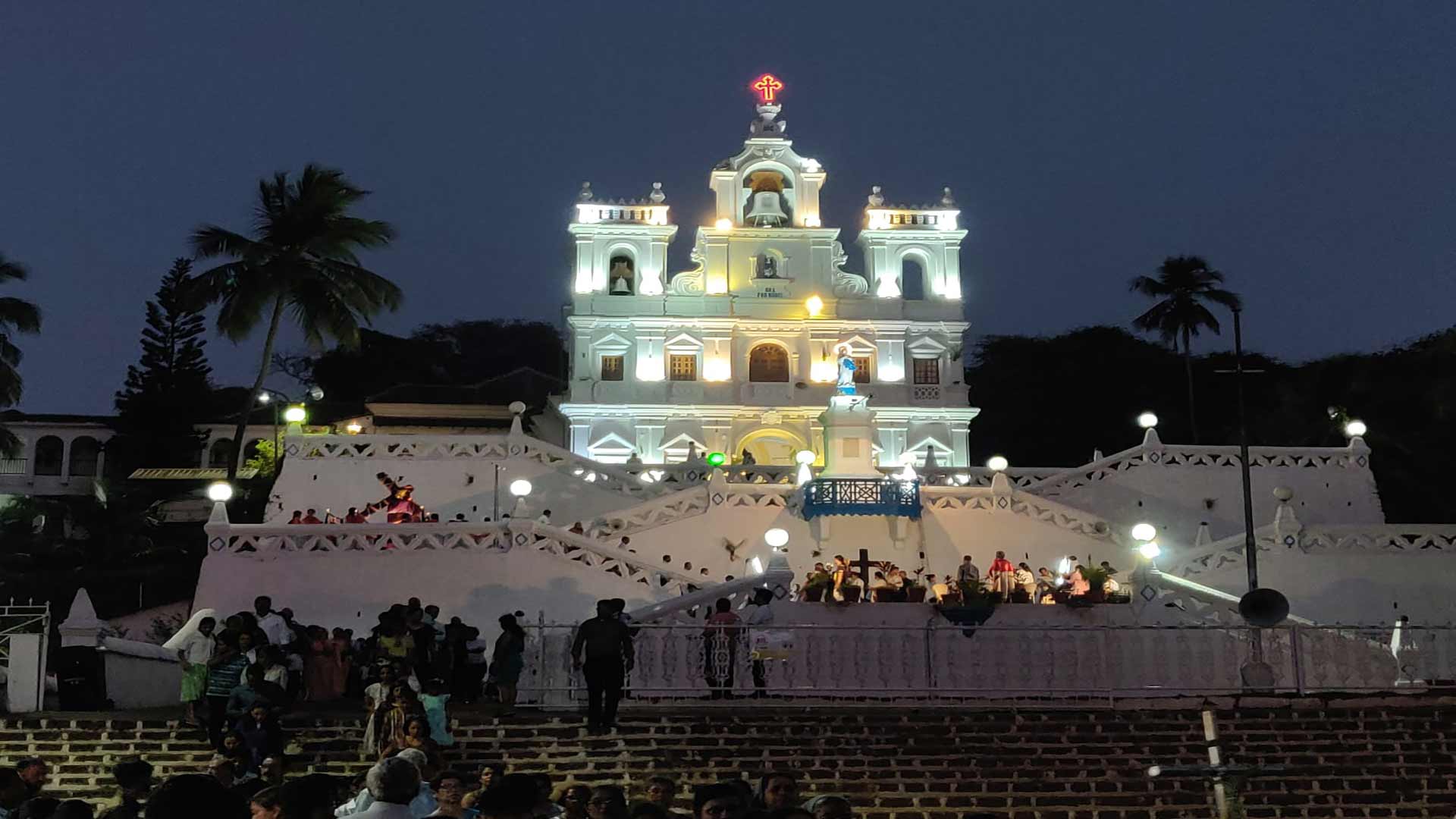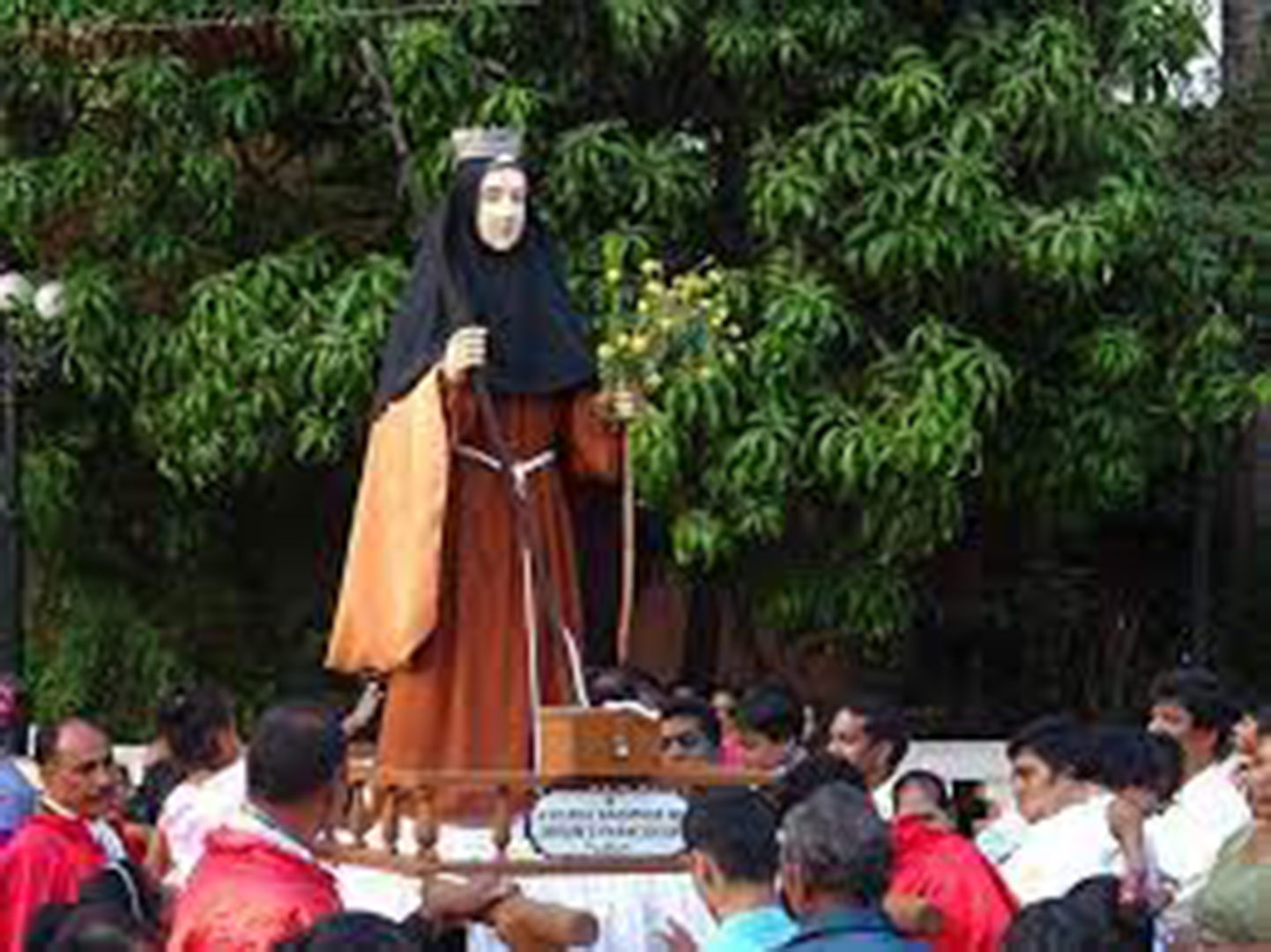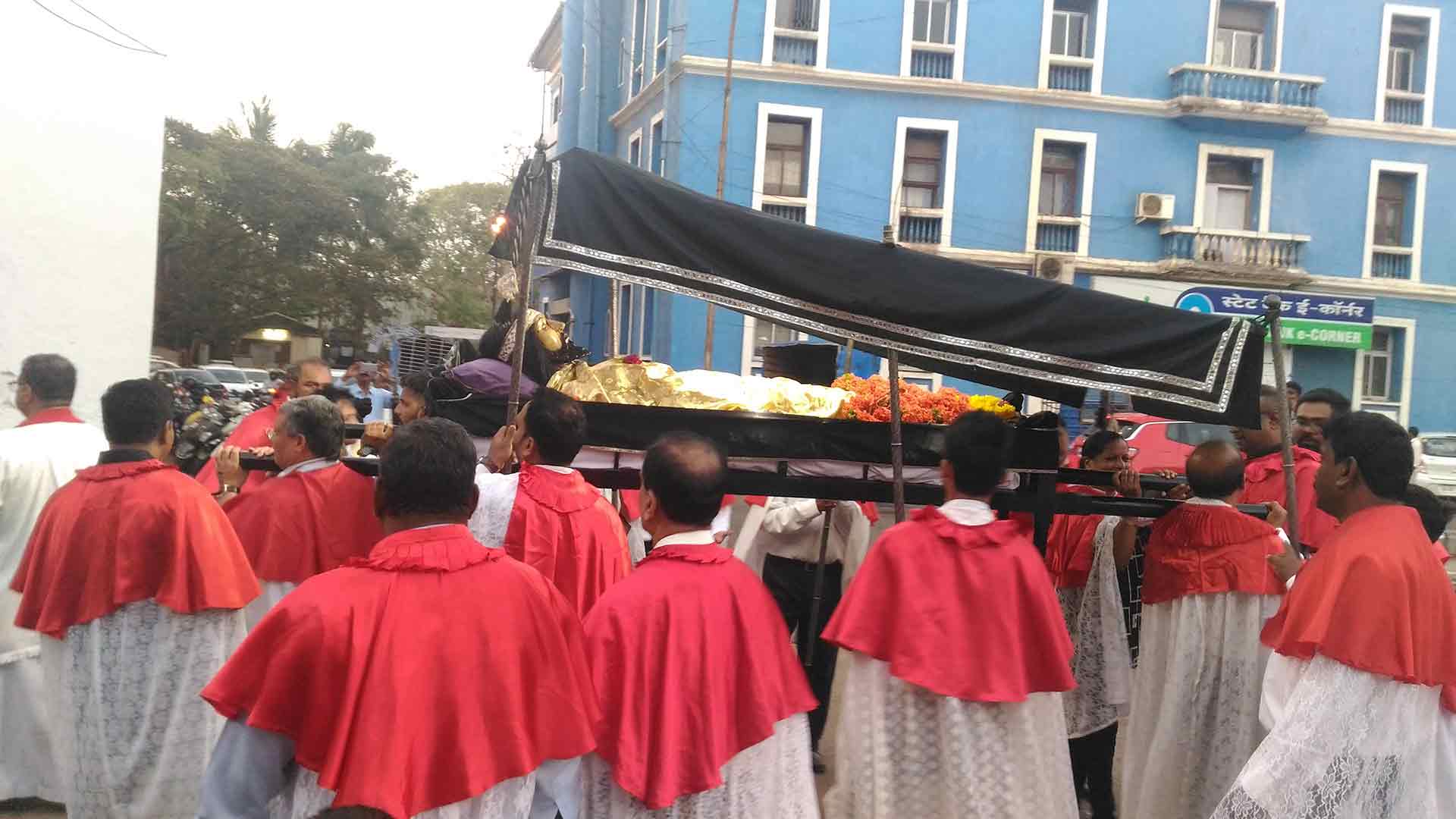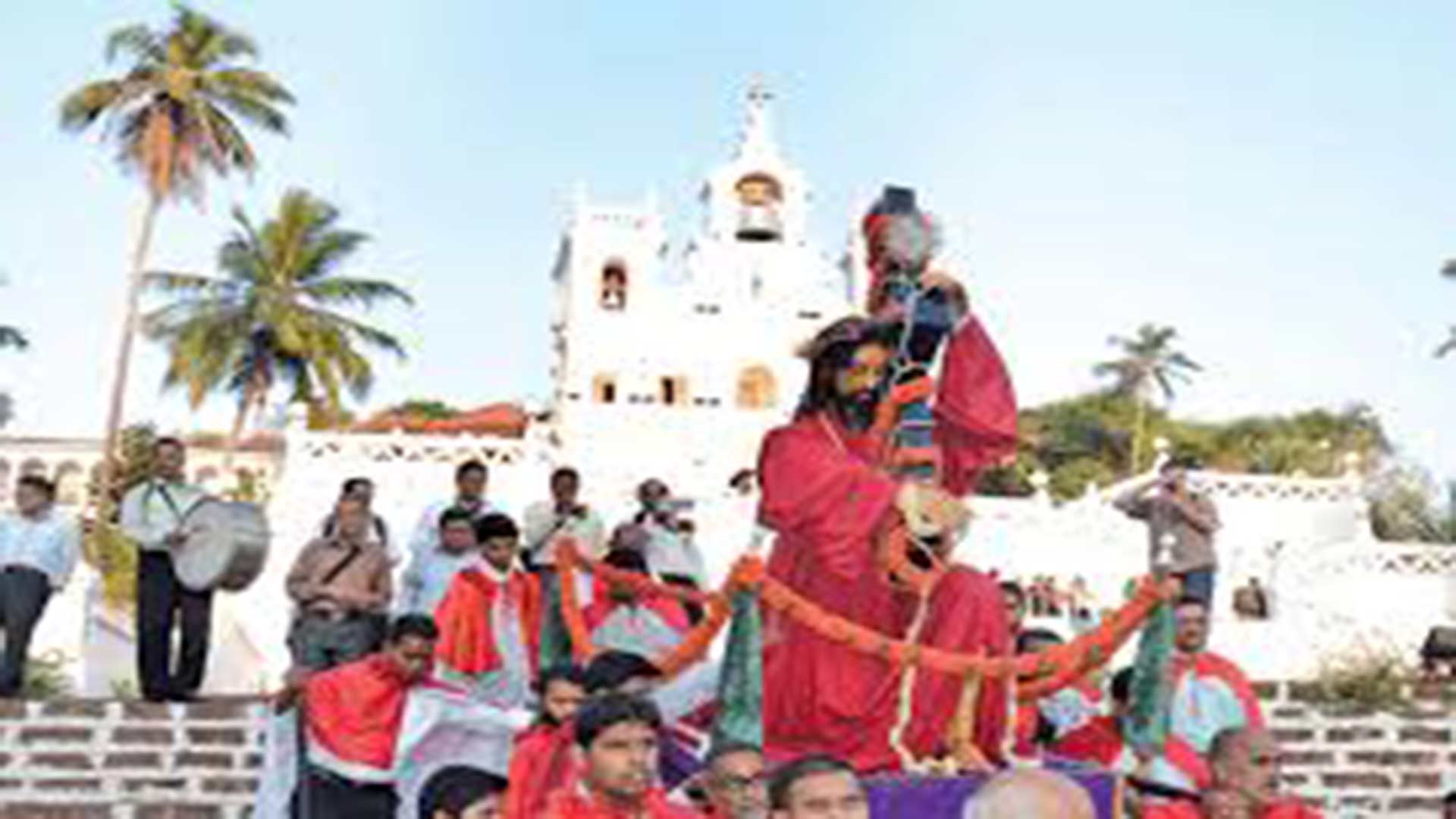Holy Passion Processions in Panjim
At the Church of the Immaculate Conception – the Igreja Matriz or main parish church of Panjim – the sixth Sunday of Lent begins on a festive note. It is Palm Sunday, which commemorates the triumphant entry of Jesus in Jerusalem.
However, after the morning Masses, there is a visible change in the mood, especially with the unveiling of the tableau in the chancel: a larger-than life-size statue of Christ carrying the Cross. Hence, the day's alternative designation: Passion Sunday.
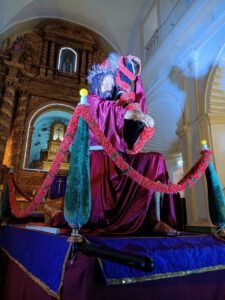
The evening of Passion Sunday features a solemn procession that begins from and ends at the iconic church. It is the highpoint of the Santos Passos (‘Holy Steps’) held on the first five Sundays of Lent, highlighting some of the most intense moments of Christ’s Passion leading to Calvary: the Agony in the Garden of Gethsemane; the Arrest of Jesus; the Flagellation at the Pillar; the Crowning with Thorns; the condemnation by Pontius Pilate (See my blogpost https://www.oscardenoronha.com/2019/03/17/santos-passos-in-panjim/ ). Other churches in Goa do not necessarily have the same set-ups (See https://www.oscardenoronha.com/2021/03/21/lenten-traditions-in-goa/ ).
Passion Sunday signals the beginning of the Holy Week. The predominant colour is purple; the altars are bare and there is not a flower arrangement to be seen. After the evening Mass, a procession called Cruz às costas – the same tableau of Jesus carrying the Cross – wends its way through some of the main thoroughfares of the capital city: the Church square, a section of 18 June, Pissurlencar, past Azad Maidan.

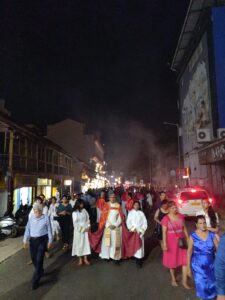
Confrades (Church confraternity members) wearing opa e murça (a red and white cape) carry the statue concertedly, giving the impression that it is floating on its own power. In the past, a brass band would follow; but nowadays, a choir sings from an intermediate landing of the church's zigzag stairway. The singing and prayers are heard throughout the route via funnel loudspeakers. The procession is animated by the recitation of five Sorrowful Mysteries of the Rosary until the end of the procession.
The circuit is marked by over ten descansos (halts), at which points the faithful flock to kiss the statue. A major halt happens at the Capela da Conceição (Chapel of the Immaculate Conception). Built in 1823, it was once a private chapel attached to the mansion of Dom Lourenço de Noronha, scion of a Portuguese noble family, and was later bequeathed to the Confrarias of Panjim church and has been under repairs since 2019.
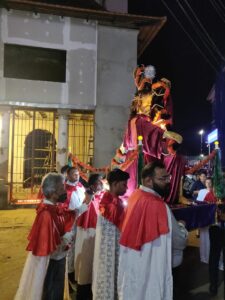
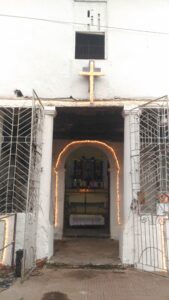
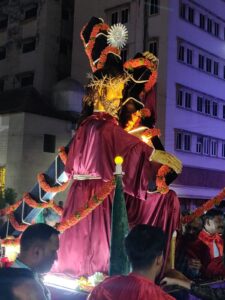
The cavalcade then proceeds via M. G. Road and Dr D. R. de Sousa, past the Garcia de Orta Garden, and up to the church square. Here, at the foot of the stairway, Jesus is met by His Blessed Mother. Sorrowing over her Son so unjustly accused and made to carry the Cross to His death, she accompanies him on his last last legs, as she did two thousand years ago to Golgotha.
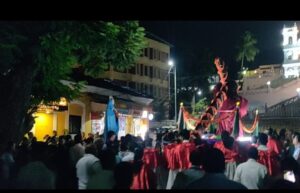
Soon thereafter, the two statues halt on the intermediate landing in front of a large cross carved out of the wall. A level higher, from a pulpit-like balcony jutting out of the said wall, a little girl unrolls the Veil of Veronica while she sings the traditional narrative. This is about the meeting of the legendary woman (feast day, 12 July) with Jesus. As recorded in the fourth station of the Via Crucis (Way of the Cross), Veronica, moved by the sight of Jesus carrying the Cross, wiped his brow with her handkerchief only to find a lasting imprint of his holy face on the cloth.
Thus ends Passion Sunday and preparations begin for the Holy Triduum beginning on the evening of Maundy Thursday. This day, which comprises a Mass with the reenactment of the historic Washing of the Feet by Jesus, marks the institution of the Eucharist and the Priesthood and the proclamation of the Commandment of Love. There is no public procession.
Five days later, on Good Friday, the processional arrangement is the same as on Passion Sunday, except for a few obvious differences.
The poignant Crucifixion tableau opens in the chancel at 3 o’clock in the afternoon. It is interesting how by then the sky is usually cloudy and the mood sombre. The liturgy of the Word and the Eucharist continue until at about half past five. Then, a procession of a larger-than-life-size statue of Senhor Morto (The Departed Lord) placed on an andor (black canopied wooden platform) starts off, with the statue of Our Lady in trail.
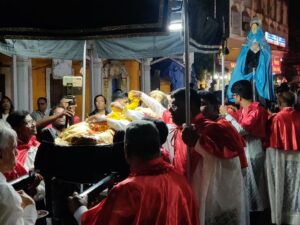
There are some other differences too. Today, the faithful are in funereal attire, which once upon a time was de rigueur. And instead of the sanctus bell, we hear the matraca or wooden rattle at every halt in the procession.
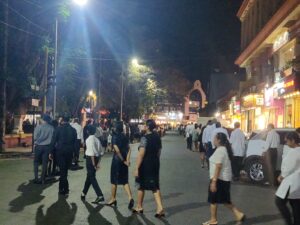
A major difference between the Passion Sunday and the Good Friday procession lies at their very end. This time round, in a coda to the baroque event, is the Sermão da Soledade de Maria (Sermon on the Solitude of Mary) delivered by a priest from the same pulpit-like balcony. The preacher extols the virtues of Mary and highlights her present solitude. Formerly, rhetoric played a crucial role on such occasions, helping to fully engage the congregation. Nowadays, the limited number of faithful who stay on to listen are easily distracted, not least by vehicle noises that detract from the solemn ambience.
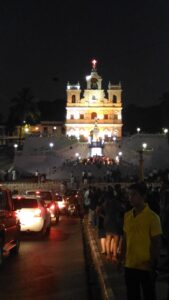
In this context, one striking similarity between the processions is that both are watched in awe by people of other religions. On both occasions, residences put up decorative lights, candles or oil lamps in homage to Our Lord. Some non-Christian establishments remain open, it being a weekday, do the same. People from other religions watch in awe, including policemen (one of whom I saw standing at attention and saluting the Departed Lord). Particularly interesting is the case of the Caculos and the Neurencars, two Hindu families on Pissurlencar Street; they traditionally offer garlands of xenvtim or abolim.
Depending on the number of attendees, the pious, kilometre-long march and related ceremonies on both days take between 75 and 90 minutes. The statues return to the church for concluding rites and veneration. By 8 o’clock, they call it a night!
Behold two processional events in Panjim that have left a lasting imprint on my mind. So was it when my life began; so is it now I am a man. So be it when I grow old – for this ancient tradition is without a doubt one of the most moving spectacles in the religious and cultural calendar of my city, Panjim.
Requests:
1- In the comments section below, do share snippets of similar traditions in your village or city, and document them whenever possible.
2 - Do watch my video titled "Passion Sunday Procession in Panjim", on http://www.youtube.com/@oscardenoronha
Lenten Traditions in Goa
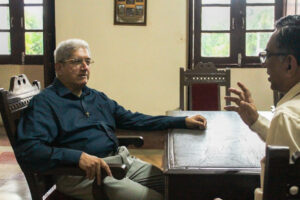
ON: What do you have to say about Goa's rich tradition of Lenten music?
JLP: Well, the Motetes (Motets) are Goa’s “classical” Lenten music. They began appearing by the middle of the 19th century. They were sung on the occasion of the Santos Passos (Holy Steps of the Cross) and also during the Sacred Triduum, that is, Maundy Thursday, Good Friday and Holy Saturday. This is Goan Lenten music par excellence. Enter Vatican II in the 1960s and as a result we now have many Lenten hymns – liturgical songs to be sung in church – all composed in the Konkani language, beginning from the year 1965.
ON: What might the earlier Lenten music have been, before the Motets came about in the middle of the 19th century?
JLP: I have no idea. They must have been only hymns in Latin because the liturgy was in Latin. The Parish Schools, for example, began in Goa way back in the 16th century. No Konkani music or hymns were taught there. It was only Latin. The students of our parish schools learnt even choral songs. They could sing in polyphony and they sang serious classical music, like Palestrina and later Perosi and others.
ON: The church Mestres (music teachers) must have also contributed a lot…
JLP: Yes, the Mestres of our Churches, who were also music teachers in our parish schools, used to compose a lot of music in Latin, especially Masses. I am from Benaulim and I met one or two Mestres in my childhood – one was Sabino Rebello and the other was some Roque whose surname I forget, who was the Mestre of St John the Baptist Church, Benaulim.
ON: Are there any studies on the Motets and the religious music of Goa?
JLP: Yes, there are certain studies made on the Motets. To my knowledge, one by Fr. Lourdino Barreto and the other by a Portuguese musicologist, Prof. Manuel Morais. Fr. Romeo Monteiro has published a booklet on this.
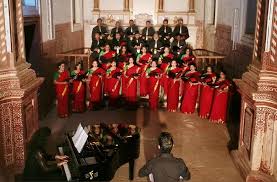
ON: Come to think of it, the Motet and the Mando belong to the same period!
JLP: Exactly, the Motet and the Mando came up in the second half of the 19th century. It was perhaps the fruit of what we could call a “compositional spurt” among Goan composers. At least for some hundred years in Goa, motets were composed in Latin. Perhaps in the nineteen fifties or a little earlier, they began composing motets in Konkani, like “Vell Mhozo Paulo” …
ON: Who composed it?
JLP: Look, we have a curious fact here. Manuel Morais has already found a number of motets, both in Latin and in Konkani, but there is no name of the composer!
ON: What could the reason be?
JLP: What he says is that perhaps the composers were few and widely known and hence there was no interest in knowing who had composed them.
ON: Let’s say, the composer of “Sam Francisku Xaviera”…
JLP: Raimundo Barreto! He is widely known for his iconic composition “Sam Francisku Xaviera”. I don’t know of any other composition by him. He probably has some.
ON: Would there be a way of collecting all the motets?
JLP: Yes. There are bound to be other motets, in private collections. Perhaps these Mestres, no longer alive today, have left in their trunks some other motets that are not known; but I doubt we shall ever know the names of the composers. That will be very difficult to find.
ON: So, at least regarding motets, we have surprises awaiting us…
JLP: I think so too.
ON: Let’s hope so! And now, let’s talk about music composed after the Vatican Council…
JLP: There are a number of composers, starting with Fr. Vasco do Rego. He was the pioneer of liturgical music in Konkani here in this diocese. We had religious songs in Konkani, even Lenten songs, which were not motets, like “Deva doiall kakutichea”, “Jezu mhojea tujer hanv patietam”. They are penitential hymns which most probably are one or even two centuries old. But the post-Conciliar impetus was given by Fr. Vasco do Rego. He composed many Lenten hymns and he was followed by others.
ON: And who would the others be?
JLP: Fr. Bernardo Cota, Fr. Lino de Sá, Fr. Santana Faleiro, Fr. Joe Rodrigues (this one is a junior priest, but has a couple of compositions)…
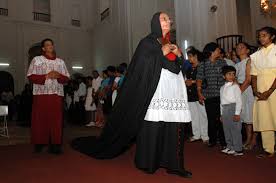
ON: And there must have been lay people…
JLP: Yes, there were lay people, too, like Alcântara Barros … and there was one who had been the Mestre of Verna church: I don’t remember his name.
ON: And Varela Caiado?
JLP: Well, I know Varela Caiado as the organist of our Cathedral in Old Goa. I don’t know him as a composer. I have no idea of any compositions by him. But he was a first-rate musician. He was the organist of our Cathedral: this is all I know of him.
ON: Are there productions of Lenten music brought forth by the Diocesan Commission for Sacred Music?
JLP: Yes, there are. I think there are at least two publications of Lenten sheet music, some loose leaflets, besides one or two audio compact discs.
ON: What would be some peculiarities of the Lenten rituals in Goa?
JLP: Well, we have traditions in Goa that are not followed elsewhere. First, the Santos Passos procession is something typical of Goa, and perhaps of a few other parishes which were part of the Diocese of Goa in times gone by, like Belgaum, Sawantwadi, Karwar: these places, which now belong to other dioceses, were part of the Archdiocese of Goa; so the Santos Passos are to be found there too. If one goes to Central India or South India or North India, no, no Santos Passos there. We have inherited this from Portugal, where the tradition still exists.
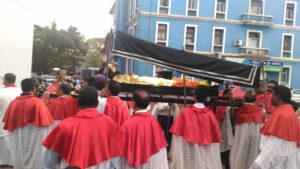
Here in Goa, the Santos Passos are an interesting event…. There are ‘two Goas’: North Goa and South Goa. In North Goa, Santos Passos are celebrated on every Sunday of Lent. If on the first Sunday of Lent one dwells on the Condemnation of Christ, the second Sunday is the Ecce Homo, on the third Sunday we have the Lord carrying the Cross, on the fourth Sunday, the Lord meeting his Mother on the way to Calvary, and so on: each Sunday offers a meditation on one of the Passos or steps of the Way of the Cross. They are not the fourteen stations, but just a few of them.
In South Goa, it is only one Sunday. For example, in Benaulim, it is the fifth Sunday, in Loutulim it is the third Sunday, and so on. Here you have only one procession of the Santos Passos, incorporating one or two or three Passos of the Way of the Cross.
Another tradition in Goa, both in North and South Goa: a child sings a Veronica hymn… Earlier on, the songs were only in Latin, but now there are Veronica songs in Konkani too.
ON: And the Procession of the Franciscan Saints?
JLP: Well, the Procession of the Terceiros: this too comes from Portugal! Here in Goa we know them as Terciários. In Portugal they are known as Franciscanos Terceiros or Franciscans of the Third Order. I wouldn’t know in which part of Portugal, but they still hold this procession of the Franciscan Saints over there. Here the procession is held only in one place: Goa Velha.
ON: But I’ve heard that Rome is the only other place where such a procession is held…
JLP: I’ve heard that too. If it’s true, I wouldn’t be able to say in which parish of Rome it is held. But I can tell you that there are a couple of parishes in Portugal where such a procession of Franciscan Saints is held: fourteen, fifteen andores (litters) are taken in procession, just like in Goa. But here, no longer are they Franciscan saints alone. There are other saints: Saint Joseph Vaz, the Patron of our Archdiocese, has already been added to the saints here. Don’t be surprised if one day the procession adds in Mother Teresa, Saint Teresa of Kolkata….
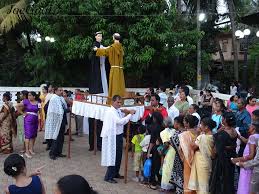
ON: But how did a Lenten procession of Franciscan Saints come about in the taluka of Ilhas or Tiswaddi, which was evangelized by the Dominicans?
JLP: Well, this procession, which takes place on the Monday following the Fifth Sunday of Lent, began in the Pilar Monastery, at a time when the Franciscan Capuchos lived there. When the Monastery was shut down, all those saints or images were lodged at the Parish Church of Goa Velha… Note that Pilar still belongs to the parish of Goa Velha, and it is this same parish that holds the procession every year.
ON: As we come to the end of this chat, may I ask you for a message for the season of Lent!
JLP: My message as a priest is that we should live the spirit of Lent as it should be: a spirit of penance, saying no to ourselves, all right, but not with ashes on our heads or sitting on sackcloth as they did in the Old Testament. Ours is a more joyful Lent, because the penance I make, I make it with love and with joy: I am anticipating the joy of the Lord’s Resurrection!
For the original audiovisual version in Portuguese, see Renascença Goa at https://www.youtube.com/watch?v=sXlnAoKU42M
English translation by the interviewee, at my request.
First published in Revista da Casa de Goa (Lisbon), Series II, Issue 9, March-April 2021 and here with a few additional inputs from the interviewee.
Good Friday Procession in Panjim
The 3 o’clock, Good Friday service at the city church of the Immaculate Conception comprises a poignant Crucifixion tableau.
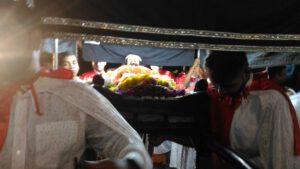
Soon thereafter, a procession of Senhor Morto (Dead Lord) on an andor (black canopied wooden platform carrying a life-size statue of Our Lord who died on the Cross) starts off, with a statue of Our Lady in trail. It wends its way through the main thoroughfares (the church square, a section of 18th June, Pissurlencar, past Azad Maidan), making a major halt to pray at the chapel formerly attached to the mansion of a Portuguese noble family. The cavalcade then proceeds via M. G. Road and Dr D. R. de Sousa, past the Garcia de Orta Garden, and up the church stairway.
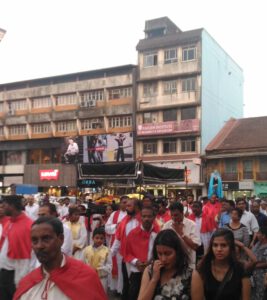
The pious march takes approximately 90 minutes. It is animated by five decades of the Marian rosary recited over speakers fitted at several points; and by Lenten hymns sung by a choir to the accompaniment of a brass band. The circuit is marked by over ten descansos (halts). At these points, penitents, all of them de rigueur, in funereal attire, flock to the two statues. Members of other religious faiths also pay their respects; many watch in awe or stand at attention (I noticed a policeman saluting).
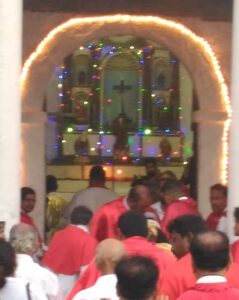
One such halt is at a quaint chapel traditionally called 'Capela de Dom Lourenço', located behind what is now the iconic Hotel Mandovi. In times past, the chapel was part of the manor belonging to Dom Lourenço de Noronha, a Portuguese nobleman, who had acquired a large estate in the then incipient city centre. After the palatial mansion was razed, the chapel was handed over to the care and possession of the city church. Alas, the venerable structure is in a state of disrepair.
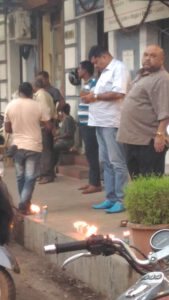
On the said route, two Hindu families (Caculó and Neurencar) traditionally offer garlands. Businesses brighten up their establishments, or simply light candles and burn incense on the adjoining pavements.
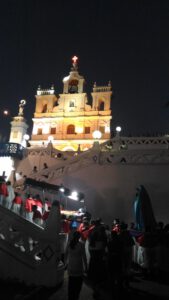
In a coda to the baroque event is a sermon (Sermão da Soledade de Maria) at a stair landing: here, from a balcony that serves as a makeshift pulpit, a priest extols the virtues of Mary and highlights her present solitude. The congregation listens in silence even while vehicle noises spoil the ambience.
The statues return to the church for final veneration. By 8 o’clock, they call it a night!
Santos Passos in Panjim
The ceremonies of the Santos Passos (‘Holy Steps’, in Portuguese) – a representation of the holy steps of Christ’s Passion – date back to the early days of Christianity in Goa.
While the Holy Week services comprise the most intense moments of the Lenten observances, many churches spread them out over the 40 days of Lent.
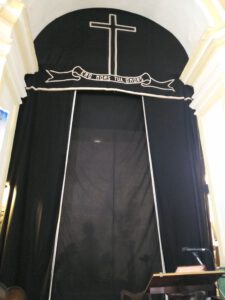
At the church of Our Lady of Immaculate Conception, Panjim, a huge black screen is put up every year, on the first Sunday of Lent, at the archway leading to the chancel. As a little child, I was overawed but also curious to know from my Dad the meaning of the Latin expression inscribed very high up: “O mors, ero mors tua” means "Oh death, I will be your death".
Only much later, I got to appreciate John Donne’s poem, “Death, be not proud”, which ends with the line “Death, thou shalt die”. The words are from Hosea 13: 14.
Similarly, in John 11: 25-26, Jesus said, “I am the Resurrection and the Life; he who believes in me, though he die, yet shall he live, and whoever lives and believes in me shall never die.”
Inside the chancel of the Panjim city Church of Our Lady of Immaculate Conception, or say, behind the black curtain, the tableau changes every Sunday. Here are scenes of the first four Sundays of Lent.
- The Agony in the Garden 2. Jesus is condemned by Pilate 3. The Flaggelation 4. The Crowning with thorns 5. Condemnation by Pilate
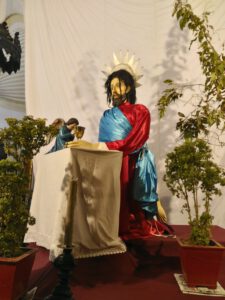
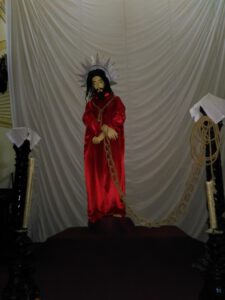
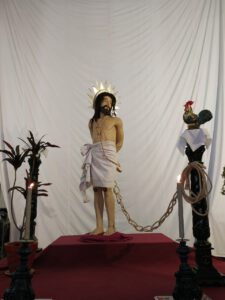
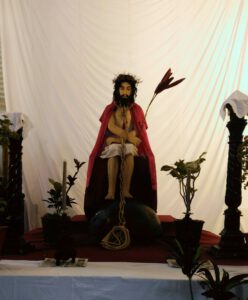
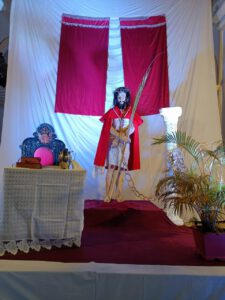
The sixth Sunday of Lent is observed as Palm Sunday, alternatively called Passion Sunday. At this church, the scene is festive in the morning. By afternoon, the mood changes. After the evening Mass, the tableau portrayed is that of Jesus carrying the Cross. At other churches in Goa, this tradition of this tableau could be different. In fact, old parish churches in North, Central and South Goa have other peculiar traditions in this regard.
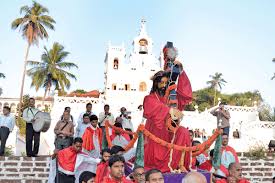
The larger-than-life size statue follows a procession of the faithful, down the zigzag stairs of the city church. The procession wends its way through the city streets, much like the procession on Good Friday, and returns to the church by Angelus time.
